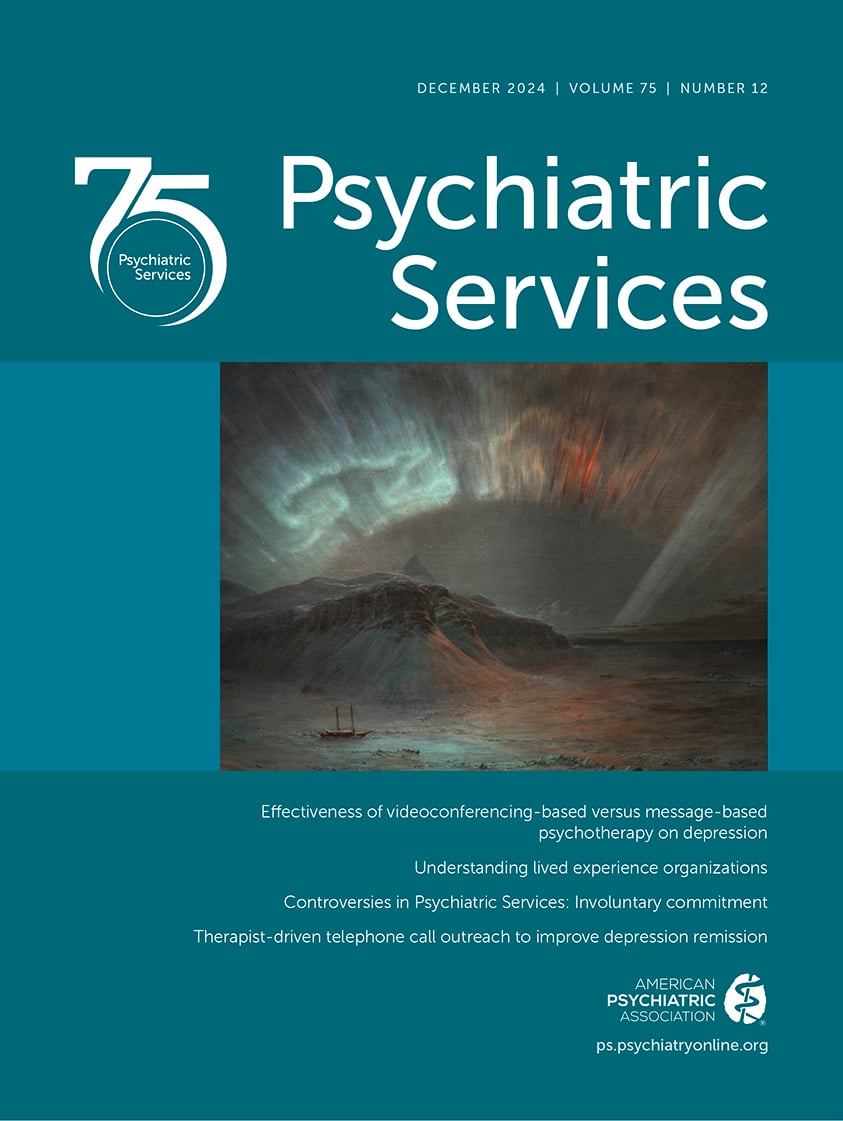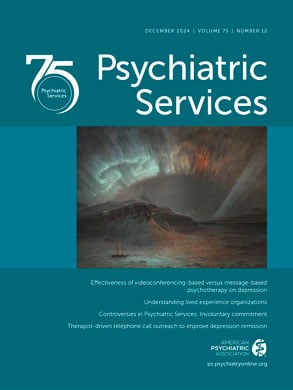Stewart et al. (
1) compared retention in care of Medicaid-insured youths who received one of two evidence-based practice (EBP) treatments (trauma-focused cognitive-behavioral therapy or parent-child interactional therapy) versus “standard” outpatient therapy. The behavioral treatment was provided via a public health system that incentivized EBP care through a higher reimbursement rate of these services compared with standard care. In the study's health system, clinicians who achieve training and sustainability requirements can use EBP-specific codes to bill for this level of care. The authors highlight an important return on investment for this EBT initiative in terms of therapy “dosing,” whereby youths who received evidence-based psychotherapy by trained providers were more likely to attend a second session and to attend more total sessions compared with youths who received standard care.
The finding that public health systems can be structured to improve the quantity of evidence-based care delivered to Medicaid-insured youths and their families is encouraging. However, considerable health system barriers impede identification of youths who may benefit from EBP therapy for trauma-related disorders. First, most trauma screening occurs during the initial evaluation. This approach is problematic because families may not feel comfortable disclosing a traumatic experience early in care, and new events may occur during a care episode. Research is needed on trauma rescreening and monitoring approaches to improve detection of trauma-related disorders. Second, clinicians may not complete comprehensive screening for child abuse–related traumas because of concerns that mandated reporting requirements may interfere with family engagement or may place a child at risk for retaliation by an alleged perpetrator. Standardization of clinician training on child abuse screening is limited, and oversight of reporting compliance is minimal. Retraining clinicians who have less experience with suspected abuse reporting (e.g., licensed clinicians who have made no child protective service reports over a multiyear period) could help improve clinician knowledge, confidence, and willingness to report suspected abuse. Third, the rapid shift from in-person to virtual telehealth services raises new privacy barriers to trauma disclosures given that clinicians have no control over the home environment during a session. Flexibility of practices to offer in-person visit options at any time during treatment, rather than exclusive use of virtual services, may help families feel safer in disclosing traumatic experiences.
Improved trauma identification and evidence-based treatment of trauma-related disorders have potential implications for youths’ general medical health. Youths who experience traumatic events may seek clinical care with common, nonspecific symptoms of aggression and severe irritability. Although evidence-based prescribing in this scenario may include treatment of co-occurring conditions such as attention-deficit hyperactivity disorder or major depressive disorder, off-label medication treatment of trauma-related disorders without trial of first-line psychotherapy may expose youths to medication side effects. Of greatest concern is the potential for inappropriate antipsychotic prescribing, because these medications are associated with serious side effects. Research is needed to investigate whether improved access to and implementation of evidence-based trauma therapies can reduce antipsychotic burden (exposure and dosing) for youths with trauma-related disorders.
Evidence-based treatment of child trauma–related disorders also has potential to improve the health and well-being of parents who participate in treatment. EBP trauma psychotherapies provide important parenting psychoeducation, guidance, and support. Thus, parent knowledge, skill building, and confidence in supporting their child’s recovery are other meaningful potential outcomes of EBP trauma psychotherapy.
Stewart et al.’s important article (
1) provides key guidance that optimizing care requires clinicians to think about both novel implementation strategies and treatment outcomes beyond child behavioral symptom improvement. Research on the impact of EBP treatment on retention in care is an excellent first step. Future research may help improve clinicians’ ability to identify youths at higher risk for attrition early in care and novel strategies to improve family engagement. Research on posttreatment longitudinal health outcomes of youths and families is also needed to characterize the full impact of EBP services. Finally, health systems innovation to optimize EBP delivery could help reach the overarching goal of making standard care synonymous with high-quality care.

